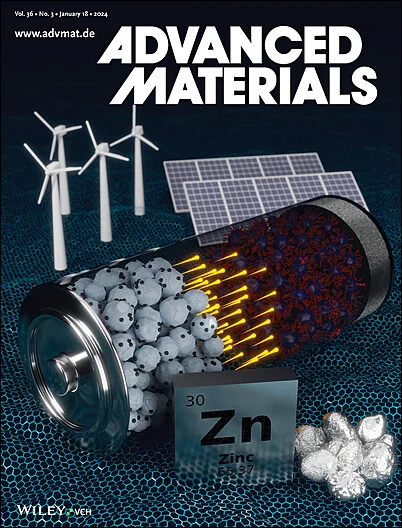Symmetry Basis Engineered Covalent Organic Frameworks for Water Purification Under Ultralow Light Intensity
IF 26.8
1区 材料科学
Q1 CHEMISTRY, MULTIDISCIPLINARY
引用次数: 0
Abstract
Achieving efficient solar‐to‐chemical energy conversion of low‐intensity and natural sunlight is a promising but challenged for sustainable water purification. Herein, an electron‐deficient pyridine units into functional basis with symmetric and asymmetric is newly pre‐designed to form covalent organic frameworks (COFs). It is found that the bidirectional push‐pull effect of the bipyridine units in the symmetric Bby‐COF induces an increase in charge density and enhances the electron sink effect. This transformation optimizes the activation pathway of dissolved oxygen, establishing a pathway of micropollutants decomposition mediated by superoxide free radicals and photoexcited holes oxidation. Specifically, the first‐order rate constant of ofloxacin (OFL) removal for Bby‐COF for is 28.14 × 10对称基工程共价有机框架在超低光强下的水净化
实现低强度和自然阳光的高效太阳能-化学能转换是一种有希望但具有挑战性的可持续水净化方法。在此,一个缺乏电子的吡啶单元被设计成对称和不对称的功能基,形成共价有机框架(COFs)。研究发现,对称的Bby - COF中联吡啶单元的双向推拉效应导致电荷密度增加,并增强了电子汇效应。这一转化优化了溶解氧的活化途径,建立了超氧自由基和光激发空穴氧化介导的微污染物分解途径。具体来说,Bby - COF去除氧氟沙星(OFL)的一级速率常数为28.14 × 10−2 min−1,比不对称Bpy - COF高出6.3倍(4.45 × 10−2 min−1)。值得注意的是,在冬季光照条件下,Bby - COF可以在30-40分钟内完全去除OFL,表现出前所未有的超低光强(36 mW cm - 2)催化性能。在这种模式下,阵列式板框流式反应器可以连续运行,利用室外阳光处理58.8 L的废水,满足大规模应用的潜力。这项研究开创了一种对称工程分子策略,用于开发高性能有机催化剂,弥合了实验室光催化和现实世界太阳能废水处理应用之间的关键差距。
本文章由计算机程序翻译,如有差异,请以英文原文为准。
求助全文
约1分钟内获得全文
求助全文
来源期刊

Advanced Materials
工程技术-材料科学:综合
CiteScore
43.00
自引率
4.10%
发文量
2182
审稿时长
2 months
期刊介绍:
Advanced Materials, one of the world's most prestigious journals and the foundation of the Advanced portfolio, is the home of choice for best-in-class materials science for more than 30 years. Following this fast-growing and interdisciplinary field, we are considering and publishing the most important discoveries on any and all materials from materials scientists, chemists, physicists, engineers as well as health and life scientists and bringing you the latest results and trends in modern materials-related research every week.
 求助内容:
求助内容: 应助结果提醒方式:
应助结果提醒方式:


